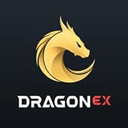Zilliqa (ZIL) is designed to extend transaction rates using a technology called Sharding as a model for improving the scalability and security of existing cryptographic and smart contract platforms.
ERC20 tokens aim to handle more than 1,000 times of Etheric transactions and can handle 2,488 tx per second. It is the fastest public block-chain platform in the world with the fastest transactions per second.
The consensus algorithm uses a Practical Byzantine Fault Tolerance (PBFT) optimized for consensus. For PBFT, it is necessary to prevent the participation of malicious nodes. To do this, we use PoW ([Proof of Work]) to set the node ID. PoW defends the Sybil attack that destroys the system by forging the ID, and is assigned to the shard when the node proves its identity.
The core of Zilika's agreement protocol depends on its practical application. PBFT is more computationally intensive than PoW, so it consumes less energy and is more efficient. Also, unlike PoW, which generally requires six checks, PBFT is a consensus protocol, giving the transaction a finality. To achieve PBFT agreement, malicious nodes should be less than one-third. When there are more than 600 nodes in a shard that are coming in through PoW, the probability of malicious nodes being 1/3 or more is reduced to 1 / million. The number of nodes in Jillica Shard is more stable because more than 600 nodes are the default premises.
Zilika was developed to improve the scalability of block-chain platforms. Typical cryptographic transaction rates such as bit coin and etherium are about 10tx per second, while the quality of transactions is more than 1,000 times higher. The more common nodes, the more difficult it is to reach a consensus, but the more nodes there are, the more transaction volumes that can be processed. This is possible through the technology called Sharding.
It provides a block-chain protocol with strong probabilistic security by mathematical logic. Even if some shards are attacked and stopped, the other shards continue to submit blocks and have excellent security. Due to the parallelism of the network, the quality of the network increases as the number of shards in the mining network increases.
Sharding is the core technology of Zilica. Large networks are automatically segmented into several smaller networks called shards, allowing transactions to be processed in parallel with each other. If one network can handle 100 transactions per second, then dividing the network into 10 shards would result in 100 transactions in each shard (divided mining network), resulting in 1,000 transactions per second. . This process consists of network administration of the Directory Service (DS) committee, which determines which nodes are assigned to which shards and assigns them to the shards. The advantage of doing this is that it does not compromise security and dramatically improves transaction processing speed with a new mechanism called sharding.















